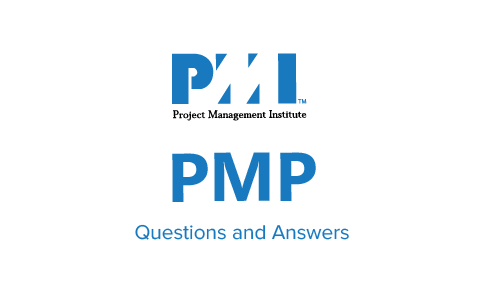What is Agile testing, and how does it differ from traditional testing methodologies?
Agile testing is a software testing approach that follows the principles of Agile development methodologies, such as Scrum or Kanban. It focuses on iterative and incremental testing throughout the development lifecycle, adapting to changing requirements and delivering frequent releases. It differs from traditional testing methodologies, such as Waterfall, by emphasizing collaboration, flexibility, and continuous feedback.
How does Agile testing promote collaboration and communication within the development team?
Agile testing promotes collaboration and communication within the development team through various practices. Testers work closely with developers, business analysts, and product owners to understand requirements, provide early feedback, and align testing efforts with development activities. Daily stand-up meetings, sprint planning, and retrospective meetings facilitate open communication and foster a shared understanding of project goals.
What are the key principles and values of Agile testing?
The key principles and values of Agile testing include:
- Testing is an integral part of the development process, not a separate phase.
- Emphasizing early and continuous testing to provide quick feedback.
- Collaborating closely with stakeholders to ensure shared understanding and transparency.
- Adapting to changing requirements and priorities.
- Promoting simplicity and prioritizing essential testing activities.
- Encouraging self-organizing and cross-functional teams.
How do you ensure test coverage in an Agile project with frequent iterations?
To ensure test coverage in Agile projects with frequent iterations, testers adopt a combination of techniques. These include prioritizing test cases based on business value, risk analysis, and impact assessment. Test automation plays a vital role in executing regression tests quickly and efficiently. Continuous integration and continuous testing practices help ensure that the system remains stable and reliable throughout the iterations.
What is the role of a tester in Agile development, and how does it differ from traditional testing roles?
In Agile development, the role of a tester goes beyond traditional testing roles. Testers actively participate in sprint planning, backlog grooming, and user story refinement sessions to provide input on testability, acceptance criteria, and potential risks. They collaborate with developers during development activities, perform continuous testing, and provide immediate feedback. Testers also contribute to ensuring the overall quality of the product and the effectiveness of the Agile process.
How do you handle changing requirements and priorities in Agile testing?
Changing requirements and priorities are expected in Agile testing. Testers handle them by embracing flexibility and adaptability. They engage in regular communication with stakeholders, participate in discussions around changing requirements, and adjust test plans and test cases accordingly. Testers work closely with the product owner and development team to understand the impact of changes and ensure that testing efforts remain aligned with evolving needs.
What is the significance of continuous integration and continuous testing in Agile development?
Continuous integration (CI) and continuous testing (CT) are essential practices in Agile development. Continuous integration involves frequently integrating code changes into a shared repository and running automated build and integration tests.
Continuous testing ensures that tests are executed automatically and continuously throughout the development process, providing rapid feedback on the system’s stability and quality. CI and CT help identify issues early, minimize integration problems, and maintain a high level of software reliability.
How do you ensure quality in Agile projects without compromising on delivery timelines?
Ensuring quality in Agile projects without compromising delivery timelines requires a combination of strategies. Testers collaborate closely with the development team, involve stakeholders in test planning, prioritize critical test cases, and focus on risk-based testing.
Test automation is leveraged to speed up testing activities, and continuous integration helps catch issues early. Regular communication and feedback loops allow for prompt issue resolution, leading to improved quality without impacting delivery timelines.
What are some common challenges faced in Agile testing, and how do you overcome them?
Common challenges faced in Agile testing include managing changing requirements, maintaining test coverage with tight timelines, balancing speed with quality, and ensuring effective communication and collaboration within the team. To overcome these challenges, Agile testers adopt a flexible mindset, actively participate in discussions and decision-making, prioritize and optimize test efforts, emphasize automation, and establish clear communication channels among team members.
Can you explain the concept of user stories and how they relate to Agile testing?
User stories are concise, user-centric descriptions of desired functionality or requirements. They serve as the basis for development and testing in Agile projects. User stories capture end-user perspectives, their needs, and the value they seek from the software. Testers use user stories to define acceptance criteria, develop test cases, and verify that the system meets user expectations. User stories provide context and guide the testing efforts throughout the iterations.
How do you incorporate automation testing in Agile projects?
Automation testing is crucial in Agile projects to enable quick and efficient execution of tests. Testers incorporate automation by identifying repetitive and time-consuming test cases suitable for automation. Test automation frameworks and tools are utilized to develop and maintain automated test scripts.
These scripts are executed regularly, often as part of the continuous integration process, providing fast feedback on system functionality and regression issues.
What is the importance of retrospectives in Agile testing, and how do they contribute to continuous improvement?
Retrospectives are important in Agile testing as they enable the team to reflect on the project, identify areas for improvement, and make necessary adjustments. During retrospectives, the team discusses what went well, what didn’t go well, and actions to improve processes, communication, and collaboration.
Retrospectives contribute to continuous improvement by fostering a culture of learning, enhancing team dynamics, and refining testing practices for future iterations.
Can you describe the different types of Agile testing techniques and when to use them?
Different types of Agile testing techniques include:
- Acceptance Testing: Verifying that the system meets user expectations and acceptance criteria.
- Exploratory Testing: Simultaneously learning, testing, and adapting based on real-time feedback and exploration.
- Regression Testing: Ensuring that previously implemented functionality remains intact after new changes or iterations.
- Test-Driven Development (TDD): Writing tests before coding to drive development and ensure test coverage.
- Behavior-Driven Development (BDD): Collaboratively defining requirements and tests using a shared language.
- Continuous Integration Testing: Executing automated tests frequently as part of the continuous integration process.
The selection of testing techniques depends on project requirements, available resources, and the nature of the software being developed.
How do you measure the success of Agile testing efforts?
The success of Agile testing efforts can be measured using various metrics, such as:
- Test Coverage: The extent to which the system is covered by tests, both in terms of code coverage and functionality coverage.
- Defect Density: The number of defects identified per unit of code or functionality.
- Test Cycle Time: The time taken to execute a complete testing cycle, including test planning, test execution, and defect resolution.
- Test Effectiveness: The ability of tests to identify defects and provide valuable feedback.
- Customer Satisfaction: Feedback from stakeholders, including end-users, on the quality and functionality of the software.
Can you provide an example of how you have applied Agile testing principles in a real-world project?
An example of applying Agile testing principles in a real-world project could be a software development project following the Scrum framework. Testers actively participate in sprint planning, collaborate with the development team, and provide early feedback on user stories and acceptance criteria.
They execute tests continuously during the sprint, identify and report defects promptly, and contribute to the sprint review and retrospective. Testers work closely with the product owner and stakeholders to ensure that the software meets customer expectations and is delivered incrementally with high quality.





